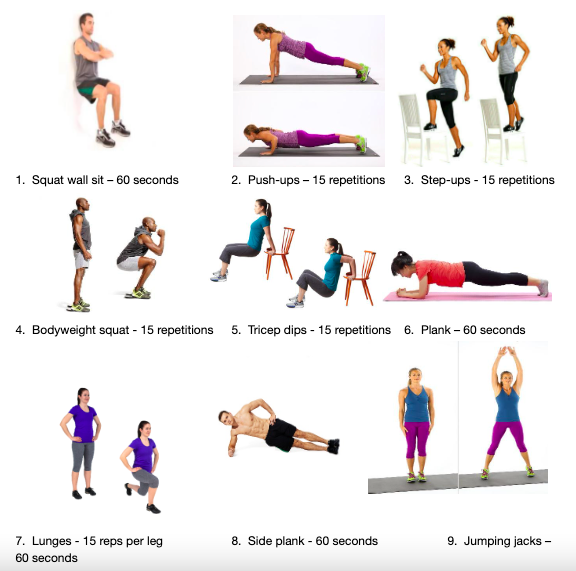We know that as we age it becomes more and more important to include a consistent resistance exercise routine for better quality of life and health. An added benefit of high intensity circuit training (HICT) workouts is that they can be performed virtually anywhere with minimal equipment, using your bodyweight as resistance – for easy execution when you are on holiday or travelling, at home, or at work. Another benefit of HICT is that this form of exercise is inexpensive, both in financial investment and in the amount of time required.
HICT has been proven to have a greater impact on subcutaneous fat loss than traditional exercise routines, it is also considered to provide greater gains in VO2 max capacity even with a shorter exercise duration and lower exercise volume performed. A noticeable reduction in insulin levels were noticed in subjects’ insulin levels with as little as 8 minutes of HICT exercise per week.
Because of the intense demand associated with HICT exercise, caution should be taken if you are overweight/obese, detrained or sedentary, previously injured or recovering from injury, are elderly, suffer from hypertension, high cholesterol, or heart disease. Consult with your healthcare professional if you are not sure of your health status.
Example, 9-step HICT exercise routine – beginners complete 1 round, intermediates complete 2 rounds and advanced 3-4 rounds. Do the routine in order and with as little rest as possible.







